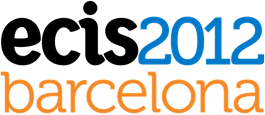Barcelona on June 10-13, 2012ESADE, Barcelona, Spain



the 20th European Conference on Information Systems



the 20th European Conference on Information Systems
Jan Damsgaard Department of IT management, Copenhagen Business School jd.caict@cbs.dk
Kalle Lyytinen The Weatherhead School of Management, Case Western Reserve University kjl13@case.edu
So far the Internet has mainly offered information and communication services in dedicated locations in the home or in the office. Services include e-commerce and e-banking, whereas e-mail and web surfing could be communication examples. Internet services are also largely detached from the physical world like locations. This service paradigm is coming to an abrupt end. The massive adoption of Internet enabled mobile devices along with recent advances in broadband wireless access enables to bring high speed Internet and computing power everywhere. At the same time the physical world is being tagged through GPS, map services (e.g. Google Maps and Street View), and also 2D barcodes and RFID/NFC technologies. Tagging and indexing create a seamless connection between the physical world and its objects and the information richness of the Internet. In addition social media pervades our lives and also has become common on our mobile devices both for accessing status updates from social networks but also for updating our social networks about our whereabouts, occupation and behaviors. This has created a revolution in our understanding of movements and interactions in the physical world. But it is difficult to predict and understand exactly how these new behaviors are emerging. It is imperative, however, to explore the transition because it creates attractive opportunities for businesses. If it is not pursued vigorously European businesses will risk lagging behind in the race that open when the Internet becomes omnipresent.
Topics to consider includes but is not limited to